Antarctica on Russian Research Vessel Akademik Sergey Vavilov
By Judi Cohen.
You’ve probably seen a ton of documentaries about Antarctica on the Discovery Channel and loads of National Geographic photos of penguins, vast untouched vistas, huge icebergs, and rugged early explorers, but how often have you actually thought about going to the great white continent?
After all, it’s far from, well…anything! As out of reach as it may seem, visiting Antarctica is not just doable, but it’s the adventure of a lifetime. Plus, you’ll get a much-needed “digital detox” to re-connect with nature and yourself.
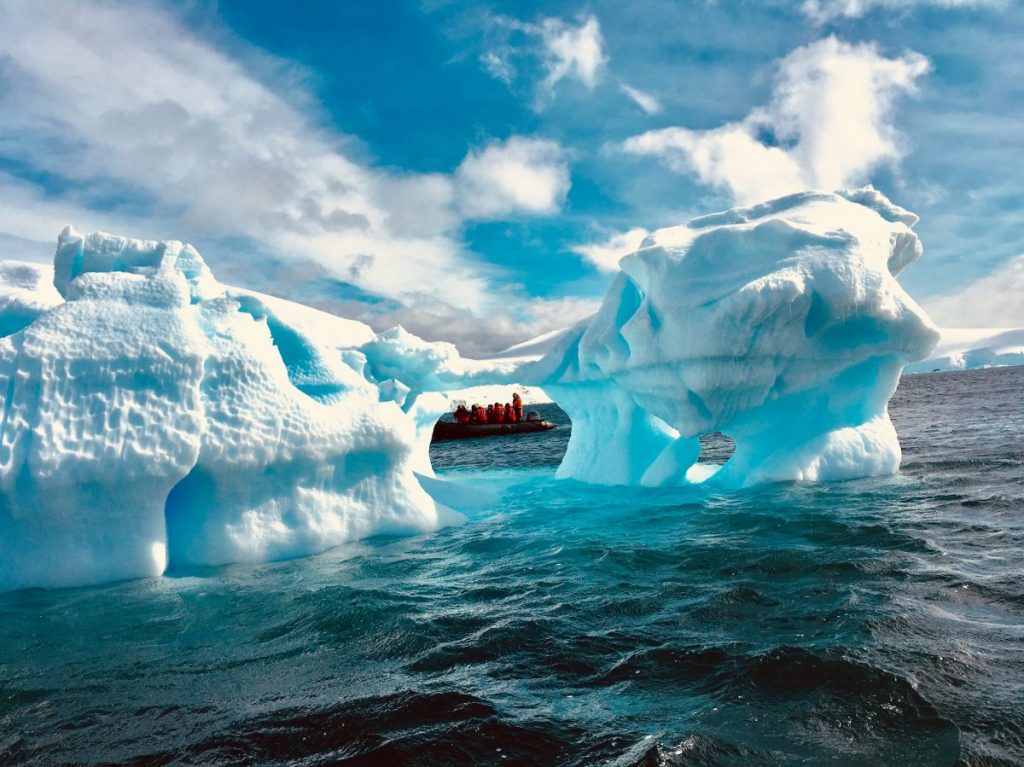
Zodiac through an iceberg WOW! * Photo: Judi Cohen
Aboard One Ocean Expeditions’ Akademik Sergey Vavilov
Our small expedition ship, One Ocean Expeditions’ Russian research vessel Akademik Sergey Vavilov, departed from Ushuaia, Argentina, on a 10-night cruise last winter. We were joined by 84 passengers from all corners of the world. A lucky group of 20 Grade 10 students from Brisbane, Australia added a youthful spirit on the ship, and brought down the average age on our sailing to about 50. Our oldest passenger, a former submarine engineer, was 85 years young.
The ship has a capacity of just 92 passengers, which is ideal, given that, in Antarctica only 100 passengers from the same ship can make a shore landing at the same time. We were all able to participate in excursions without taking turns.
Most passengers chose to see Antarctica on Akademik Sergey Vavilov because of the cache of the vessel and the caliber of the experts on board; the learning component was a huge motivator for most of us.
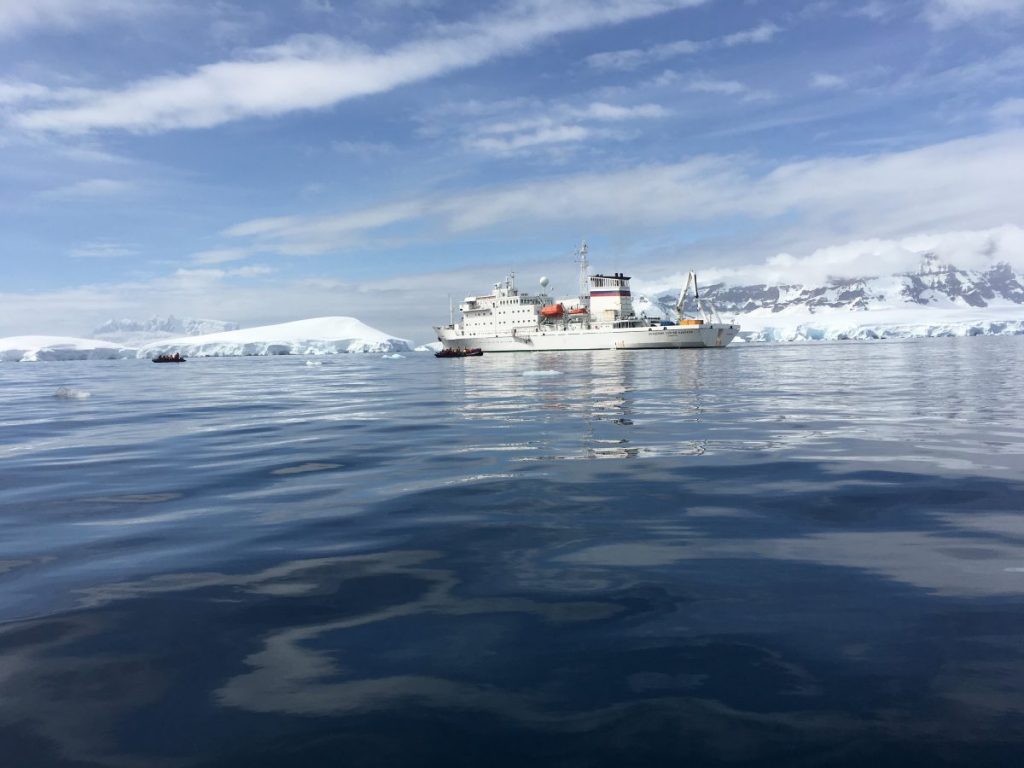
Akademik Sergey Vavilov. * Photo: Judi Cohen
Built in 1988 in Finland as a research survey vessel for the Russian Academy of Science, the Russian-flagged ship was later converted into a polar expedition vessel. The Vavilov is certainly not a “luxury ship,” but our Twin Private Cabin with lower berths was very comfortable.
The cabin — with it’s own private toilet and shower — was kept impeccably clean, with fresh fluffy towels and bathrobes.
Other cabins had shared washrooms with either double or triple accommodations. Solo passengers were matched when possible with others in a shared cabin of their choice based on budget; some sharing double and trip cabins on our trip. A friend proudly invited me in to see her Shackleton Suite, which was very spacious with two rooms and a bathtub! There are six suites available on two decks.

A Twin Private cabin. * Photo: One Ocean Expeditions.
Daily Routine aboard Akademik Sergey Vavilov
Most mornings went something like this: smoothies in the ship’s lounge with panoramic views, a buffet breakfast in the dining room with a daily briefing, morning excursion, lunch, afternoon excursion, technical briefings by one of our experts, happy hour in the lounge, dinner, and finally a nightly fireside chat with one of our experts.
We looked forward to the briefings that focused on Antarctic history, excursion overviews and instructions, and anticipated sightings of species and terrain.
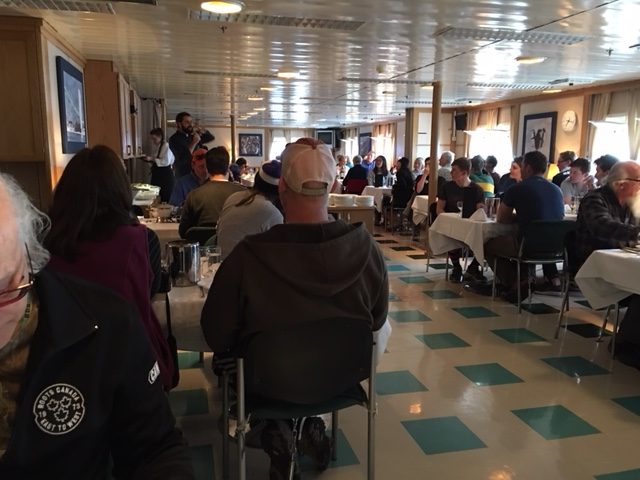
Dining Room during a pre-dinner presentation. * Photo: Judi Cohen
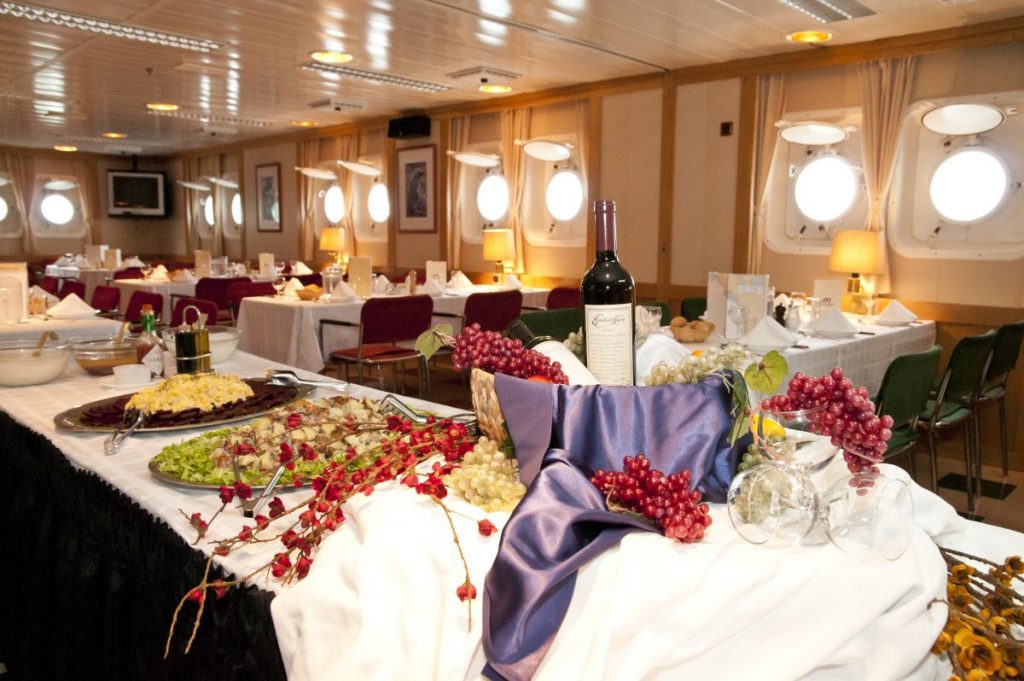
The ship’s dining room prettied up for dinner. * Photo: One Ocean Expeditions.
There was ample time to enjoy all of the ships’ facilities, like the library, flush with books on Antarctica and the Arctic, and the multi-media room with computers to edit photos and videos. There was a small fitness room, and a relaxing wellness centre with sauna, salt-water plunge pool and outdoor hot tub, along with a massage therapist to ease any post-hike sore muscles…particularly for those of us who are not natural athletes.

The onboard gym. * Photo: One Ocean Expeditions
The First Few Days on Akademik Sergey Vavilov
Our 10-night itinerary involved sailing from Ushuaia across the Drake Passage, with a return flight from King George Island to Punta Arenas, Chile. By flying back, we were able to enjoy two additional days in Antarctica. The itineraries offered by One Ocean Expeditions vary in trip length and sail/fly options. Our itinerary was designed for everyone to sail one way and fly back the other.
The trip started as we set out across the infamously choppy Drake Passage, between the tip of South America and the Antarctic Peninsula. I came prepared with nausea patches, pills and wristbands of every shape and size…but when the sun finally peeked out after two days of huge swells, grey skies and high winds, we all agreed that the “Drake Shake” was a rite of passage for visiting Antarctica. (Not all crossings are quite so rough — on a previous crossing, I experienced a “Drake Lake” with waters smooth as glass.)
As we crossed the Drake, escorted by a plethora of seabirds, we received our mandatory IAATO briefing (International Association of Antarctic Tour Operators). We learned about the protection of wildlife and nature, scientific research activities, and about keeping Antarctica pristine. Next, we received instructions on boarding and disembarking from the zodiacs, the correct way to “lock arms” with the sailors who would be assisting us, and the need to remain seated and holding on to the ropes in the zodiac at all times.
Finally, we had fittings for our parkas, snow pants and waterproof boots, and we were shown how to use our life jackets. Those who wanted to Kayak had a fitting for their dry-suits. These tight-fitting GORE-TEX “onesies” kept the kayakers dry from head to toe.
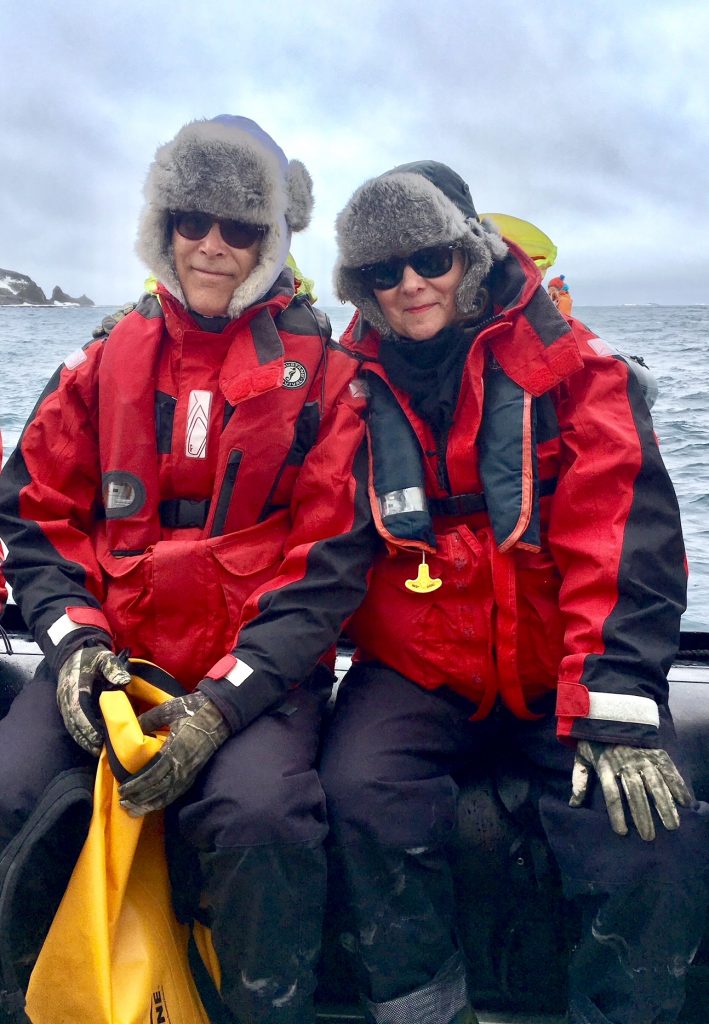
Judi and Lawrence in a Zodiac with all gear, lifejackets and dry sack.
The first voice we heard every day was that of Boris Wise, our expedition leader, a naturalist, wilderness guide and photographer, who has been guiding voyages in the Arctic and Antarctic since 2010. During our meals he updated us on the weather, our route changes and planned excursions.
We loved hearing his cheerful voice and seeing his confident smile, even when the news was not so good regarding pending storms and itinerary changes.
Day Four, We Reach the Great White Continent
By the fourth day, the Drake’s fury was behind us and we arrived. Nothing can prepare you for your first sighting of the great white continent. Dozens of us stood on the deck, completely silent as we approached and took in the scale of immense glaciers calving into the sea, massive icebergs, and a palette of vivid colors, from the deep blues to the rich aquamarines of the ice and water, along with a soft pink sky.
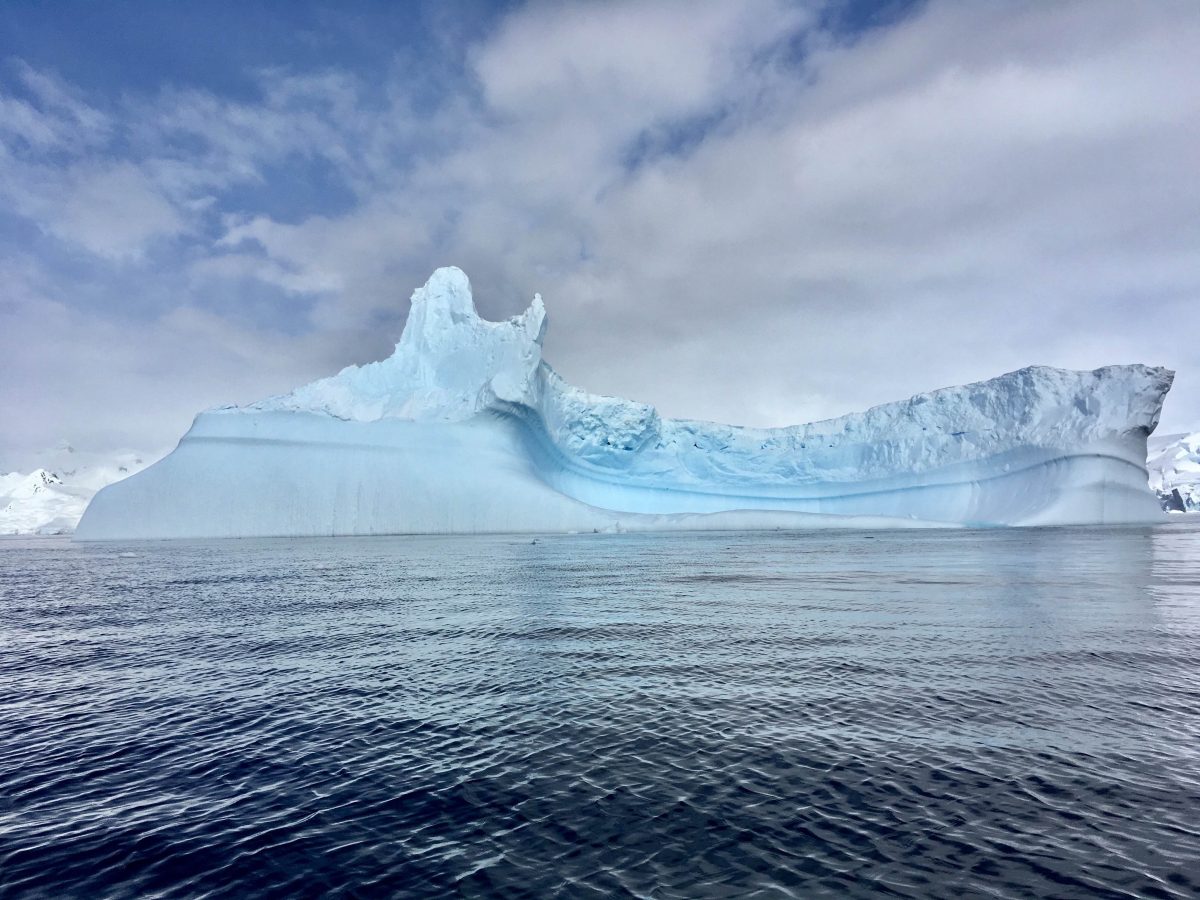
“Iceberg porn!” * Photo: Judi Cohen
That morning, we took our first zodiac excursion to Fournier Bay where we saw glaciers and odd-shaped ice formations. In the afternoon, we had a hiking excursion to Danco Island and enjoyed the splendor of the rugged land and the snow and ice covered mountains. Most passengers did both excursions either by kayak or zodiac. Some passengers stayed on board for one or both excursions. At least one passenger on my trip did not do any excursions due to physical limitations.
That night, about 40 passengers took zodiacs to Leith Cove for an outdoor sleep-over on the Antarctic Peninsula. Considered a highlight of the expedition, the opportunity to sleep out was offered at no extra charge and all campers were provided with state-of-the-art insulated and waterproof sleeping bags. They dug what they called “graves” in the snow and put their sleeping bags in the snowy holes.
(I, on the other hand, was happy to wave goodbye to the campers and tucked myself into my comfortable bed for a good night’s sleep aboard the ship!)
The following morning, some tired-looking campers told us about cold toes, how hard it was to fall asleep without darkness under a dusty pink sky, and how the condensation from their breath in their sleeping bags created cold dampness. Despite these challenges, most said that it was a worthwhile, memorable, and once-in-a-lifetime experience. When I return to Antarctica, I will definitely give it a try!!
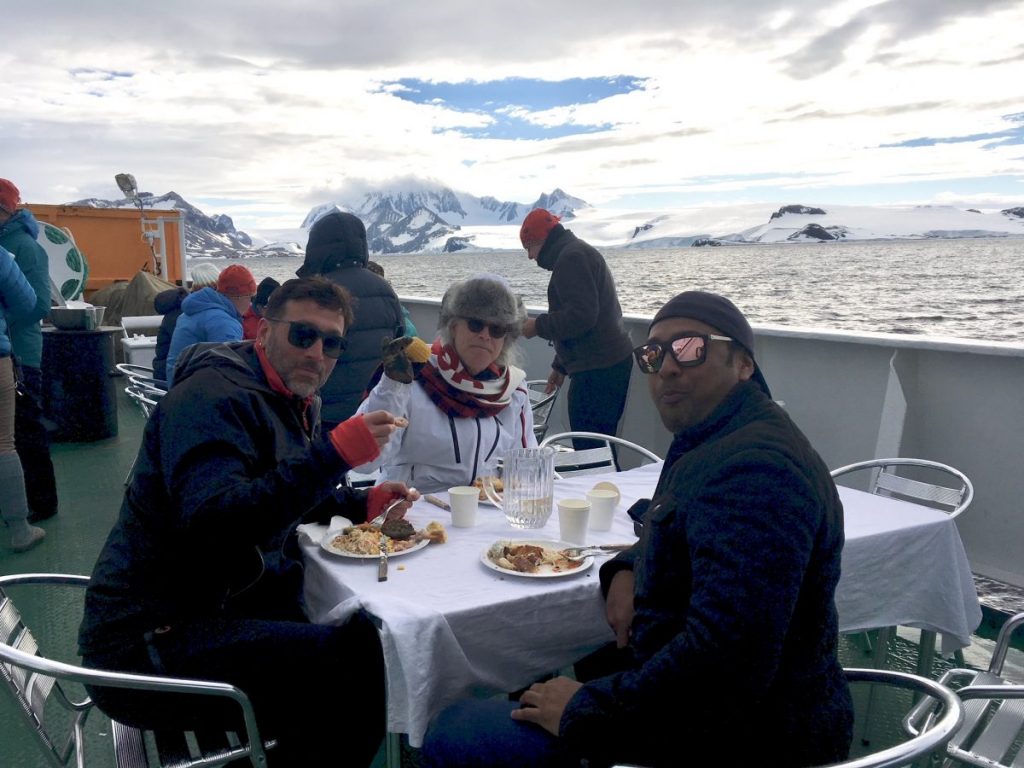
BBQ Dinner on deck, what a backdrop! * Photo: Judi Cohen
The Next Six Days aboard Akademik Sergey Vavilov
This is not a trip where you’re stuck aboard the ship. We had the opportunity to kayak, take zodiac excursions through ice fields and make landings to hike, walk, sketch, learn about the Antarctic history, or just sit along the shore and observe the wildlife, glaciers and icebergs.
“Going with the flow” is definitely a defining theme on an Antarctic cruise. Despite our planned itinerary, the winds, snow, and ice caused continual route adjustments. We ended up having to cross the Brandsfield Strait twice (both crossings were unplanned in the original itinerary).
I did not realize that the changes were made since I was sleeping off my seasickness. We maintained our position in Maxwell Bay for two additional nights (another unexpected change) at the end of the trip until it was safe to disembark and board zodiacs to take us to Marsh Airstrip at King George Island.
(Our trip ended up being 12 nights aboard the Vavilov instead of the planned 10 nights. All of our flights and hotel reservations needed to be changed accordingly. The Antarctica itinerary options aboard the Vavilov range from 10 nights to 19 nights on the ship, plus one or more included hotel nights.)
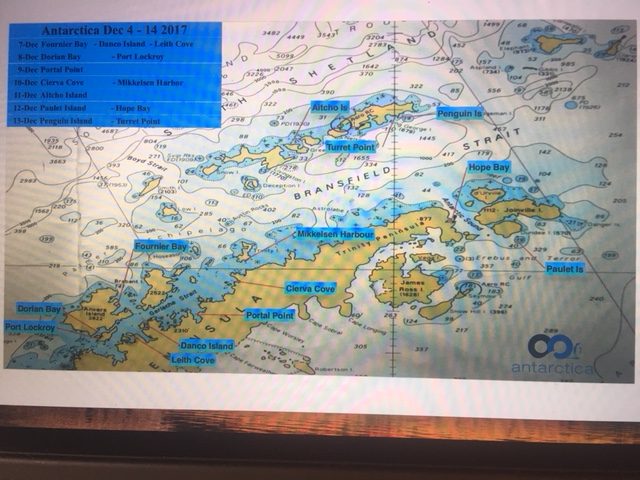
Map of the route. * Photo: Judi Cohen
Highlights from our Zodiac Excursions and Landings
Zodiac Tour of Cierva Cove
I felt all the thumps and bumps as we navigated through thick flows of broken ice. At first, this was a little unsettling since all I could think about was how strong the bottom of our zodiac was!
Surrounded by magnificent ice formations, we turned our heads and cameras to take it all in! I was overcome by sensory overload with the deep blue ice, the gurgling of the air bubbles in the ancient ice flows, and the thumping of the chunks on the bottom of our zodiac. All of this was coupled with sightings of swimming Adelie and Chinstrap penguins around our zodiac, and a wonderful view of an Argentine research base on the rocky hills.
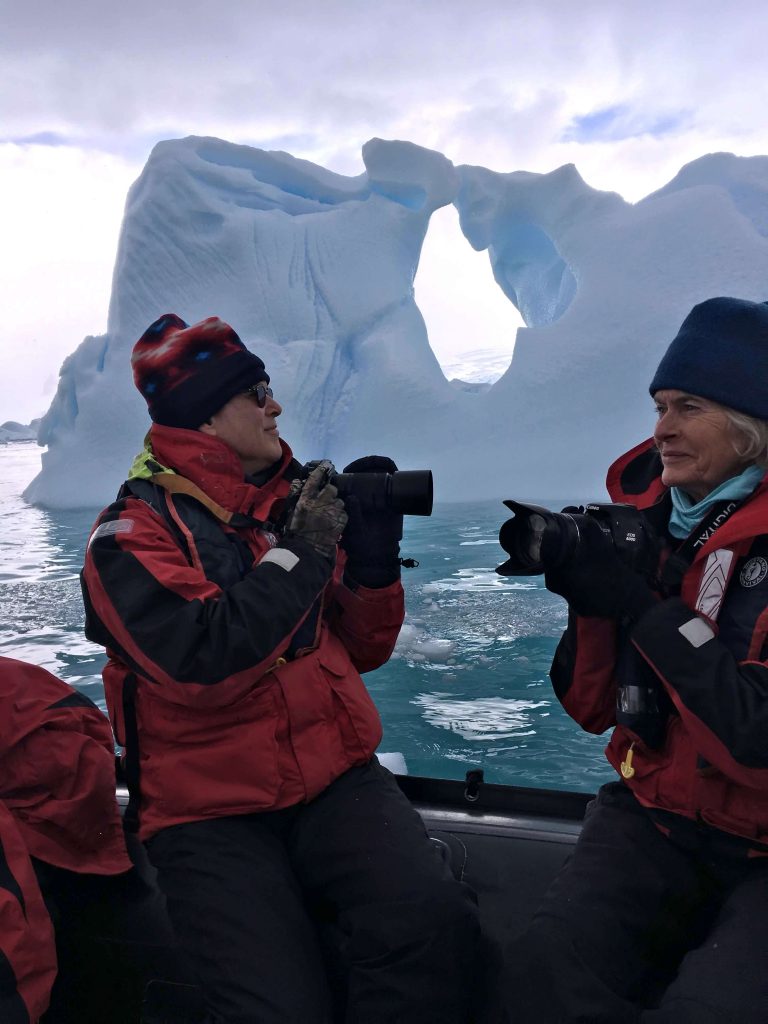
Cierva Cove in a zodiac. * Photo: Judi Cohen
Penguin Island
We arrived at Penguin Island, at the perfect time of year (early December) to see the cutest grey fluffy Adelie penguin chicks. We sat and watched as they were being fed and cared for by the adults. Other passengers hiked to see the volcanic cone of Deacon Peak.
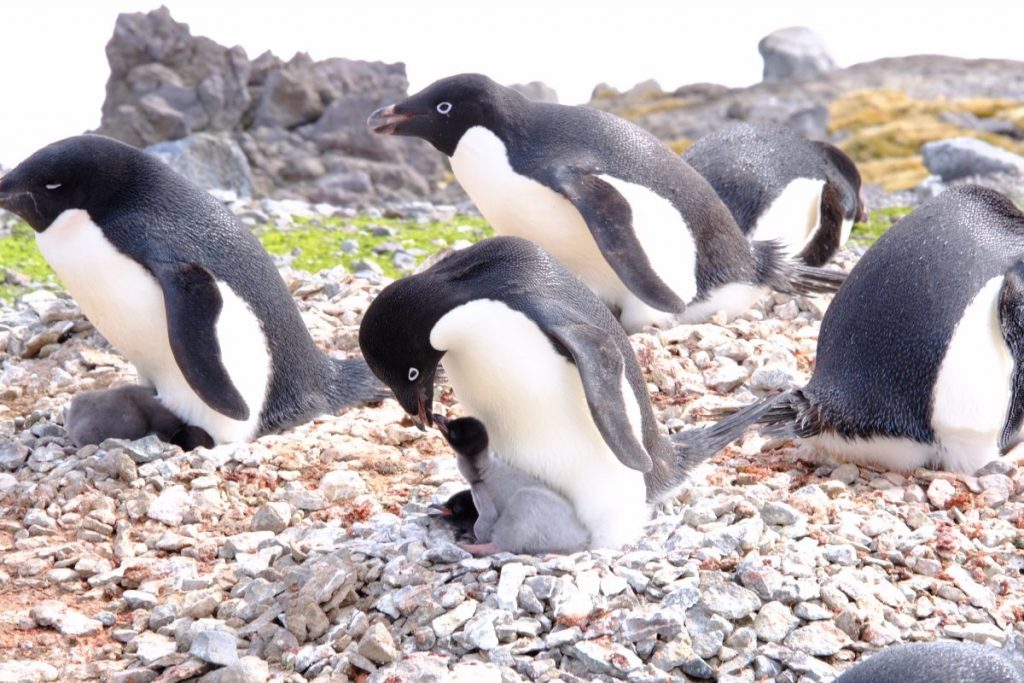
Baby Adeiie penguins just two days old. * Photo: Judi Cohen
Portal Point
It began to snow quite heavily as we landed at Portal Point. The snow was very deep as we used our poles to steady ourselves on our climb to the top of the point. I sunk almost waist-deep in the snow several times and was assisted to my feet by other passengers to continue the climb.
After we explored the area, the real fun started as about 30 passengers and staff stripped down into their bathing suits and walked or jumped into the icy waters for the Polar Plunge while the rest of us cheered them on. They all definitely earned their bragging rights! Even the penguins watched in disbelief from the wet rocks as the chilled plungers emerged and ran for their dry towels and blankets!
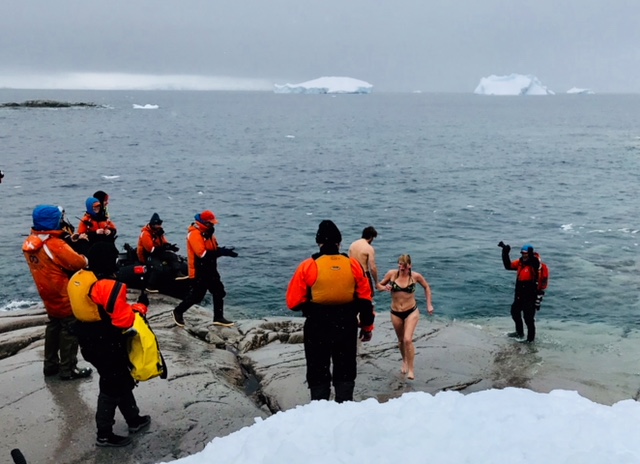
Polar Plunge. * Photo: Judi Cohen
Port Lockroy
One of my highlights was visiting the quirky little “Penguin Post Office” and museum at Port Lockroy — the first British permanent base to be established in the Antarctic Peninsula. (There’s also a colony of adorable Gentoo penguins on the island that acted as “welcoming committee” upon our arrival.)
As a result of the rugged rocky terrain, we had to climb up about eight very steep makeshift steps to get from the Zodiac up to the museum…but it was well worth it.
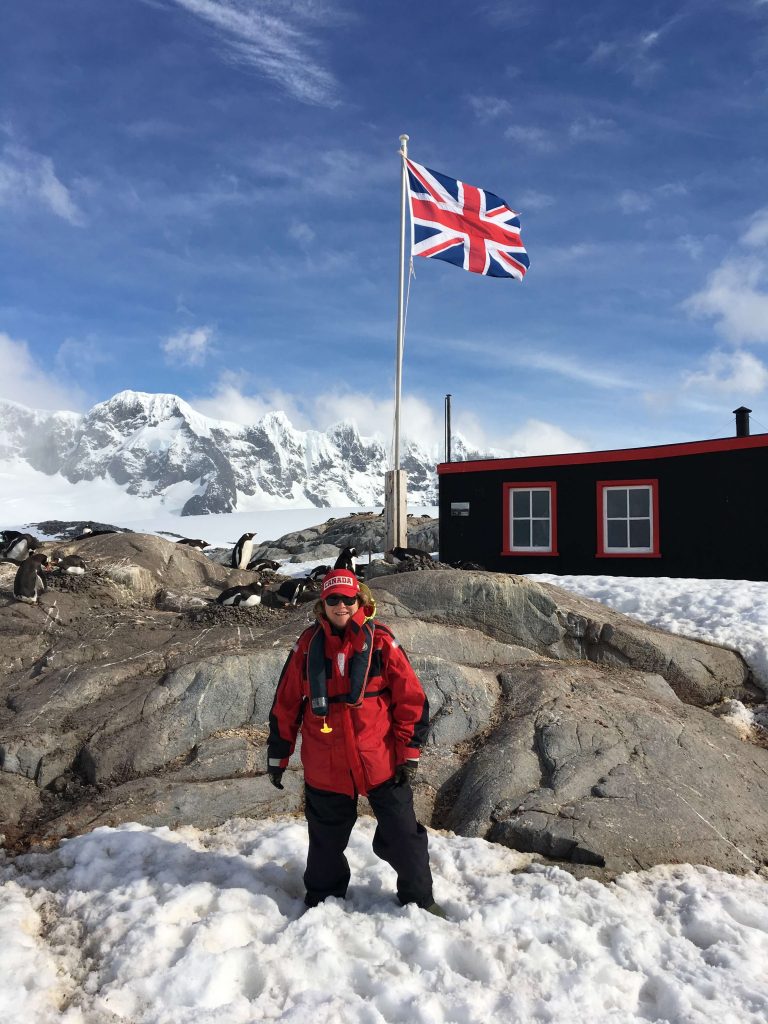
Judi at Port Lockroy (Penguin Post Office). * Photo: Lawrence Cohen
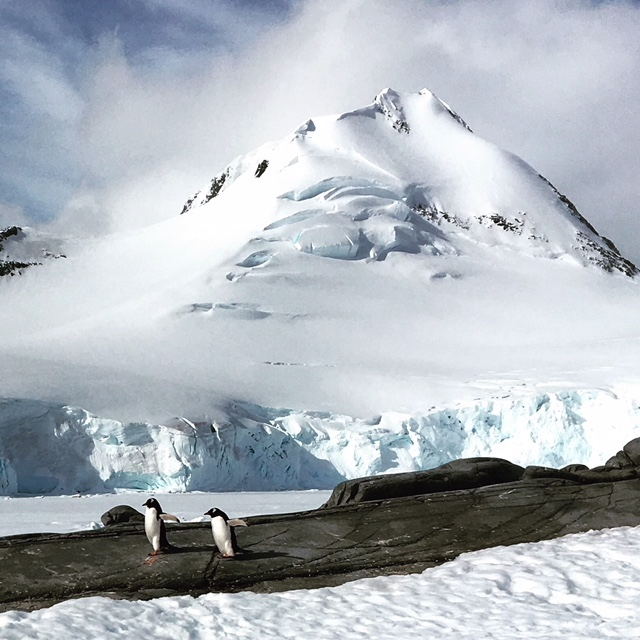
Port Lockroy Penguins. * Photo: Judi Cohen
Our Expert Guides
From our expedition leader to the glaciologists, ornithologists, Antarctic historians, and naturalists, the One Ocean Staff along with the special experts aboard created an open, comfortable atmosphere to be curious and to ask questions about the unique experiences in Antarctica.
One interesting question was about how to handle going to the bathroom while on an excursion. The simple answer was that you can not leave anything on the land that is not naturally present. Needless to say we were all reminded regularly about “managing our ballasts” — i.e. do not eat or drink too much before leaving the ship! For the overnight camping, a bucket and curtain was set up by the excursion team. In the morning it was packed up with all of its “contents” and brought back to the ship. For day excursions, people had to just hold it!
There were also many questions about the roles of the male and female penguins in protecting their eggs, and about the care and feeding of their chicks.
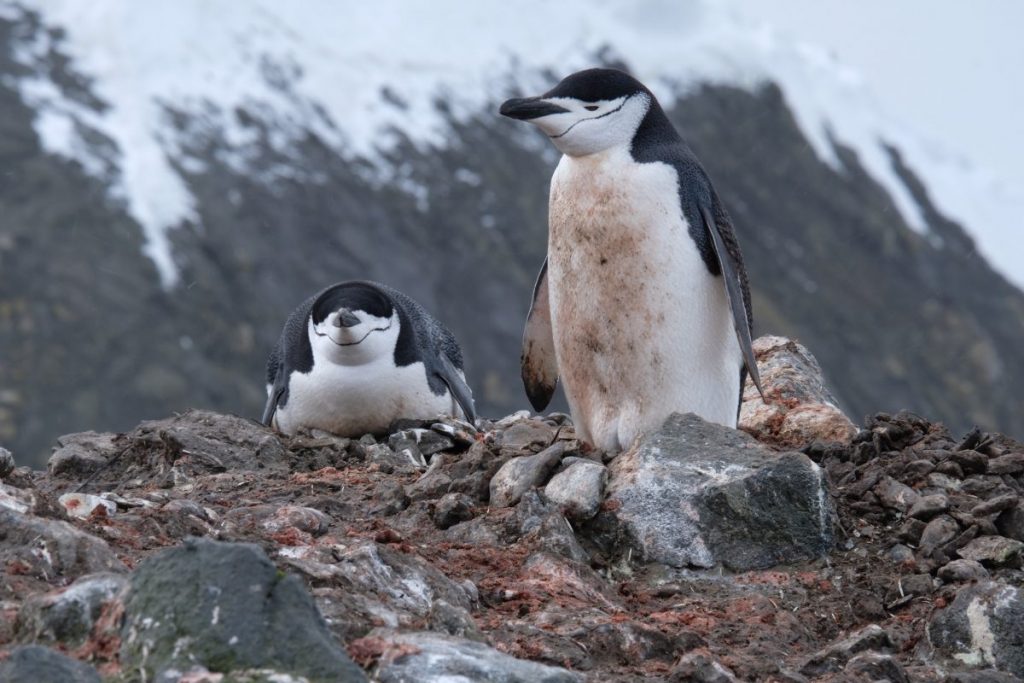
Chinstrap Penguins. * Photo: One Ocean Expeditions.
Whether it was an informal conversation in the lounge, a formal presentation, or during excursions, the experts were prepared and eager to engage in conversation and teach us about our surroundings.
My room was next to Dr. Joan Louwrens, who was one of the physicians on our sailing. She attended to the passengers, while a Russian doctor looked after the Russian crew. We got to know Joan quite well since she administered seasickness meds to virtually all of us! She has been an adventure medic for transcontinental cycling trips, and has worked on research and expedition vessels for many years.
Now I am not a birder, nor have I ever expressed an interest in learning about them, however, being in Antarctica surrounded by birds of all kinds and most notably the penguins, I devoted lots of time listening to our Ornithologist, Simon Boyes, speak to us in his thick UK accent about our many feathered friends.
It was fascinating to walk with him through hundreds of penguins on their nests, busily transferring rocks and protecting their eggs from the large skuas that swooped down to steal them.
I had the privilege of sketching with our Artist-in-Residence, Falcon Scott, during one of our landings. Falcon is the grandson of Robert Scott, the famous polar explorer and British Royal Navy officer, who led the British Antarctic (Terra Nova) Expedition (1910-1913).
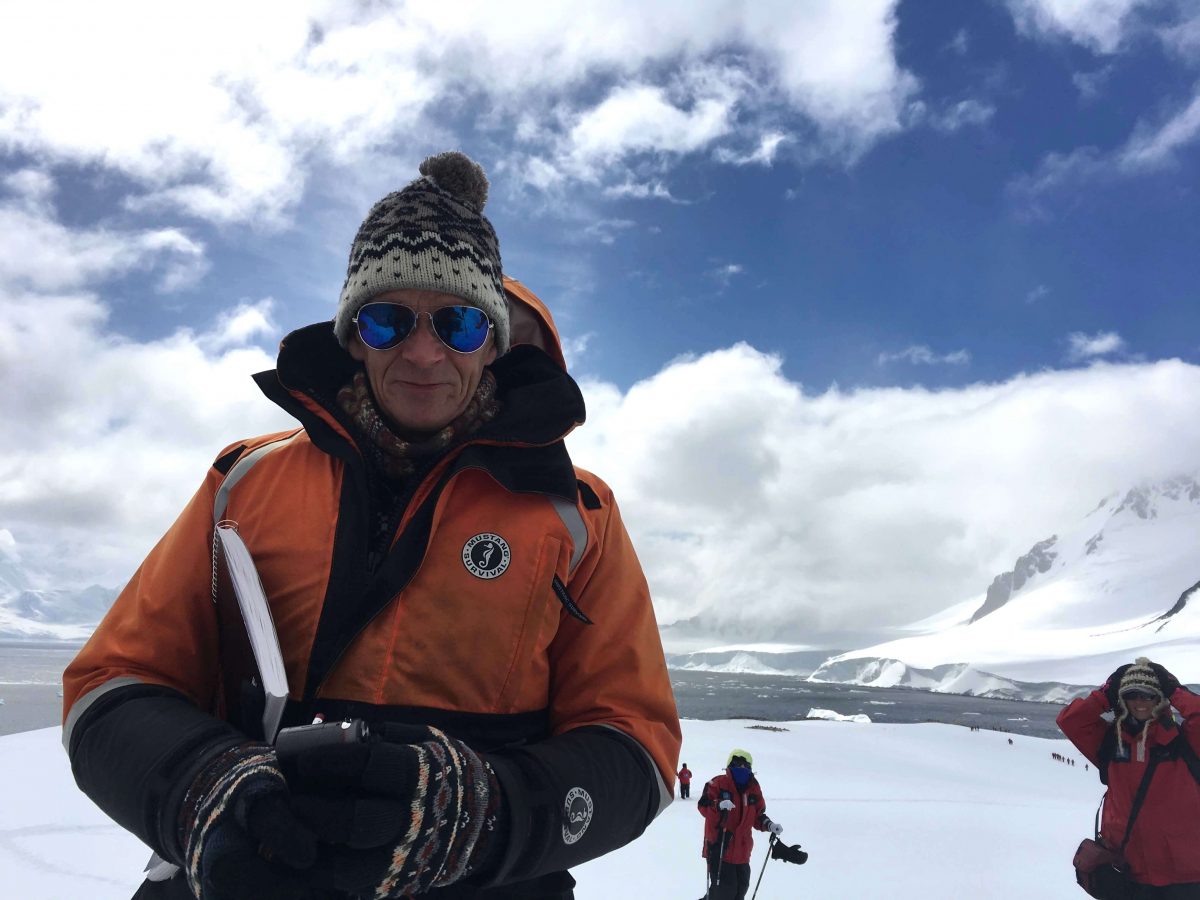
Falcon Scott, Artist in Residence. * Photo: Judi Cohen
An Adventure of a Lifetime
My time on the Vavilov was enriching on every level. And it was a much-needed opportunity to disconnect from the buzz of social media and reconnect with my adventurous spirit. From the colossal tabular icebergs and the mind-boggling scenery to the wildlife sightings and pungent scent wafting for miles around penguin rookeries, visiting Antarctica was certainly a thrill of a lifetime! So, when you set out to plan your next travel experience make sure Antarctica is high on the list!
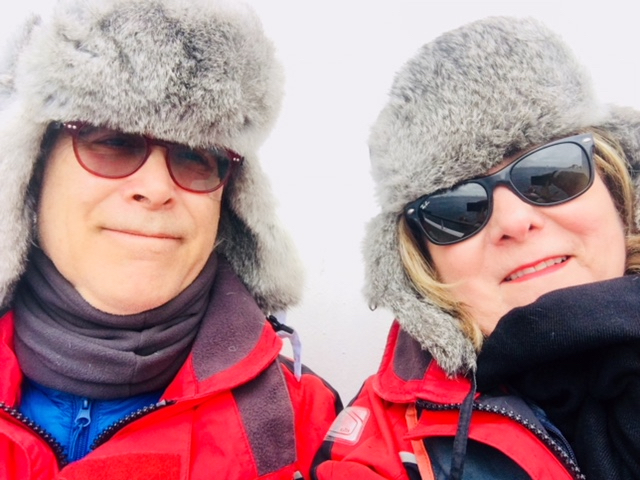
Judi and Lawrence in matching hats!
Antarctica Tips
- If your trip provides a waterproof coat, pants and boots, (ours did) pack light! Take only a couple of layers of merino wool tops and pants, and a light down puffy jacket.
- Pack a couple of pairs of gloves, including a light pair that will allow you to use your camera. Your gloves tend to get wet on the zodiac rides. I used small heating inserts in my gloves that worked like a charm.
- Take a warm hat with ear flaps that can be tied as well as a close fitting knitted hat you can wear over a baseball cap
- Bring a high-resolution camera, and learn how to use all the nifty settings before you start your trip! Don’t forget extra flash memory and battery backups — you will want to capture every second of the wildlife, natural beauty, the panoramic views, and the icebergs from the moment you arrive! (Oh yeah, NEVER take your camera strap off from around your neck in the zodiac or kayak. A gust of wind or splash of the waves could send your camera to the bottom of the icy sea!) Wrap your camera in plastic to protect against sea-water damaging it, or keep it inside the dry-sack that is provided to you for the duration of the expedition.
- Polarized sunglasses and sunscreen are musts. During the summer sailing season, from November to February, there is sunlight for almost 24 hours!
- Remember that in the Antarctic the only thing that is certain is change. Embrace it! Your itinerary will likely be just a suggestion… Safety is the top priority for your captain and expedition leader who will assess the forecasts and adjust your course. Our expedition leader reminded us that while we ‘city folk’ like to think we can control everything all the time — from the Drake Passage to needing to wait out severe weather — in Antarctica Mother Nature is in charge!
- For more info on One Ocean Expeditions Antarctica adventures, read the QuirkyCruise company profile.
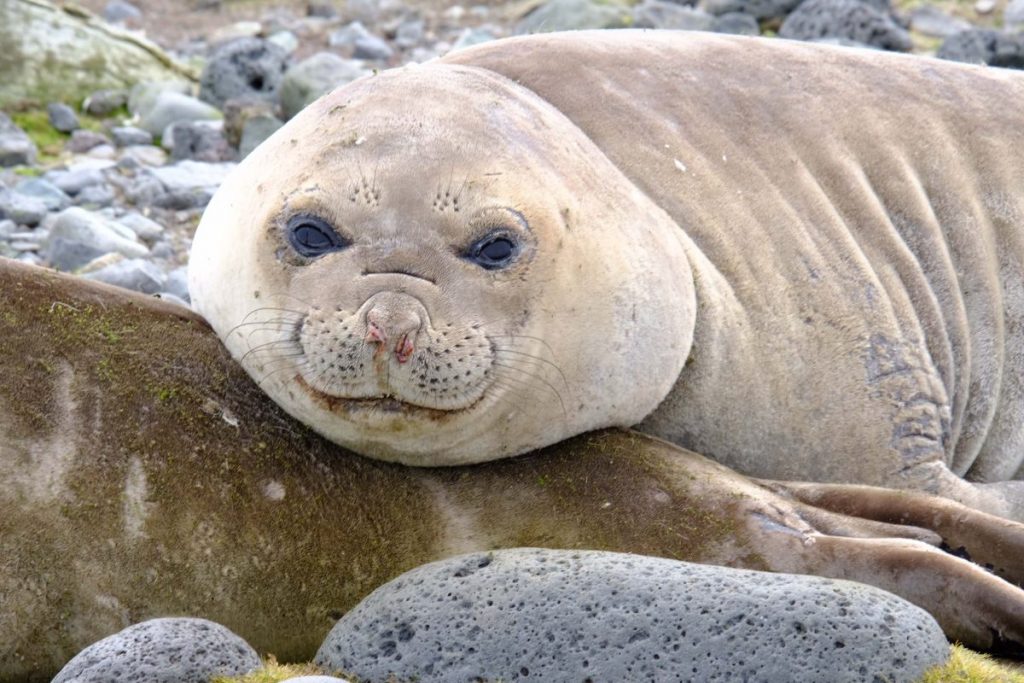
This Baby Elephant Seal gives new meaning to adorable. * Photo: Judi Cohen
RELATED: Read about another kind of Antarctica expedition, with Atlas Ocean Voyages, by John Roberts.
Don’t miss a post about small-ship cruising, subscribe to QuirkyCruise.com for monthly updates & special offers!
© This article is protected by copyright, no part may be reproduced by any process without written permission from the author. All Rights Reserved. QuirkyCruise.com.


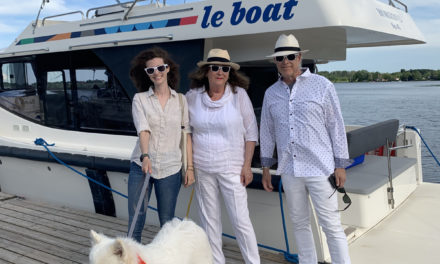
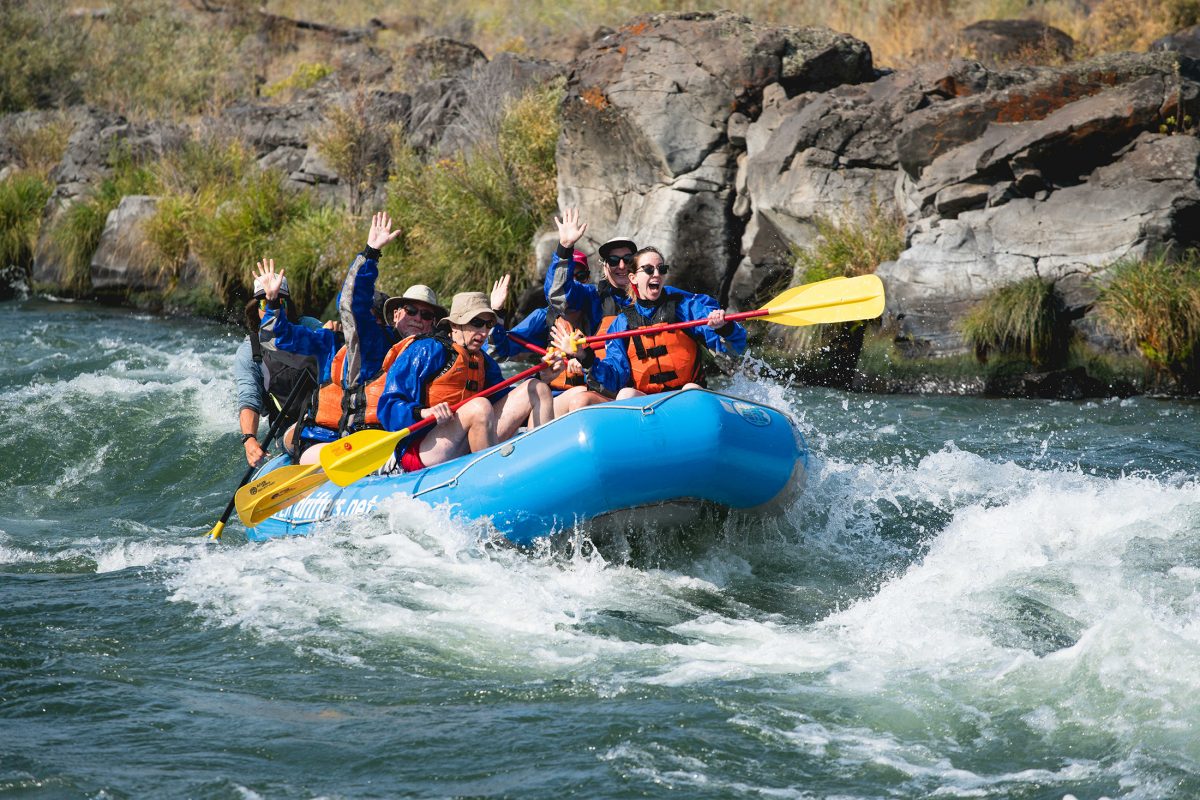
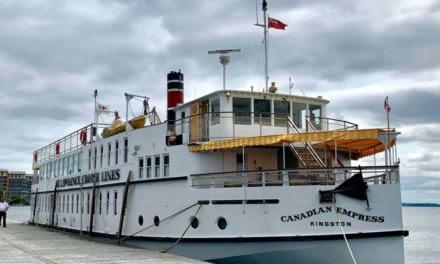








 HEIDI SARNA
HEIDI SARNA












I would go with One Ocean Expeditions to the Arctic or Antarctic in a heartbeat❤️❤️❤️.
Thanks for the write-up! I recently went on the Vavilov in the Arctic and it was a fantastic experience. I’d recommend it for anyone. I was worried that 90 people would be too much to handle, but the operation was seamless and the landscape seemed to absorb us all. I heard tales from other guests of going to Antarctica but the seasickness component put me off — and still does, despite your excellent descriptions. The ice was amazing — coming from Australia, I don’t see much.
Sounds really cool. One day I would love to do a trip like this. Love the pics.
Thank you. You would definitely love it.